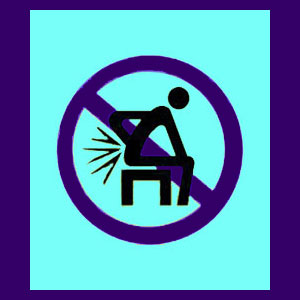
Acute coccyx pain is usually the result of one of a few possible occurrences. Child birth, injurious trauma and psychosomatic processes are all common causes of acute and chronic pain in the tailbone. It is crucial to receive a true and accurate diagnosis in order to understand the real reasons for your severe coccyx pain. The apparent cause might seem obvious, but tailbone symptoms can often enact a deceiving and puzzling condition. Just ask any of the millions of patients who have tried everything to combat their agony, yet still suffer despite a host of therapies attempted and possibly, even a failed surgery or two.
This report examines the true agony of severe, sudden tailbone pain.
Acute Coccyx Pain Causes
Trauma is the most common form of coccyx injury. Falls, assaults, car accidents and sports injuries are all contributors to the likelihood of a tailbone fracture or bruise. Some people have a protruding coccyx, which makes tailbone injury even more likely to occur. A fractured coccyx can be very painful and might take a long time to fully heal. If you have been injured and are suffering from tailbone pain, make sure to receive a proper medical exam with imaging studies of the affected area.
Childbirth is also a typical source of coccyx pain. During birth, a woman’s coccyx is flexible and unusually mobile. This process is designed to allow the coccyx to move freely and out of the way of the birth canal. Sometimes this does not occur and the coccyx can be damaged, often by the baby’s head. This type of injury is often not obvious, due to the pain and related symptoms of the birthing process. Many women discover lingering pain in the coccyx, days or even weeks later, and realize they actually are suffering from a fracture. Make sure to follow up with your doctor if you have any postpartum back pain.
Mindbody Acute Coccyx Pain
One of the most common causes of coccyx pain is also the least diagnosed. Psychological back pain can affect any part of the spine, including the tailbone. This type of pain often sets in after a traumatic accident or childbirth. In these cases, the accident or birth only acts as a trigger for convincing psychosomatic pain to begin. The pain is blamed on the physical event, rather than investigated further to eliminate the possibility of a psychological causation.
Treatments for this type of psychogenic pain will most likely fail, since they are targeting a physical anatomical cause when the pain is actually psychogenic. You can see how this process cleverly disguises itself as a physical syndrome, when in fact, there is no injury or the actual physical back injury has long since healed.
Resolution of Acute Tailbone Pain
The coccyx is an evolutionary remnant of the tail. It serves no real purpose and therefore, medical science does not care much about performing casual coccyx surgeries. The coccyx might not be important, but back surgery is still a serious health risk and can leave long-term or permanent effects on the patient. It is not wise to rush into a drastic treatment for your acute tailbone pain. Also, be wary of the side effects and dependency issues associated with many of the powerful pain management drugs often prescribed for severe coccyx pain.
If your pain lingers and resists many attempts at medical treatment, consider the possibility that you might be suffering from a mindbody concern. If this matches your suspicion, try knowledge therapy as an alternative to the usual ineffective physical modalities which have already let you down too many times. A large number of coccydynia sufferers have found good results using this risk-free and cost-free treatment.




